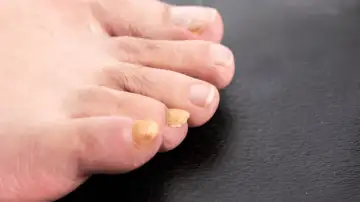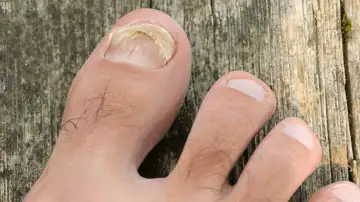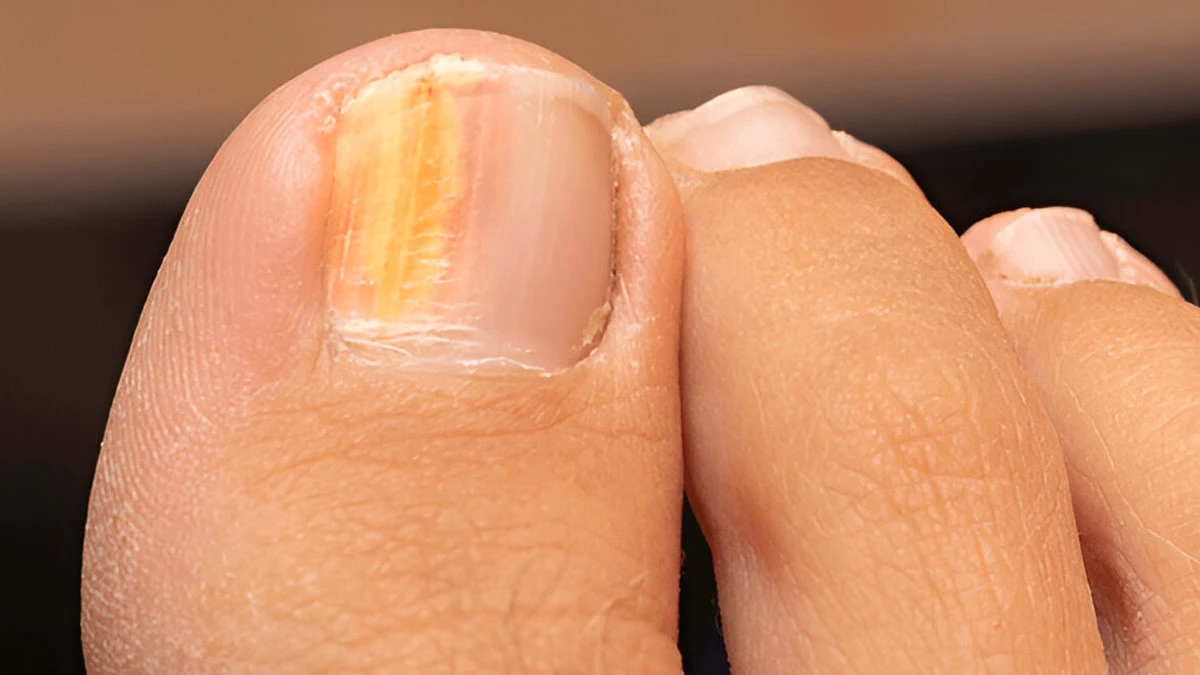Have you noticed your toenails looking yellow, soft, or a bit different during the rainy season? It’s something many people experience, especially when feet stay damp for too long in wet shoes and socks.
With all the puddles, humidity, and closed footwear, monsoons can quietly take a toll on your toenail health. If your nails have been feeling weaker or changing in colour, it could be more than just a seasonal change, it’s your body asking for some attention.
What Happens to Toenails During the Monsoon?

Your nails are made of keratin, a tough but porous protein. This makes them prone to absorbing water. During monsoon, when your feet are constantly exposed to water at every step, dirty puddles, sweat, and cramped shoes, nails soften, become discoloured, and are at risk of infection.
Fungal infections, such as onychomycosis usually surge during rainy seasons. It thickens the nail, makes it yellow or brown, becomes brittle, and can even separate from the nail bed.
According to a 2022 study, exposure to humidity and closed-toe shoes significantly increases the risk of nail fungus. Wet environments soften the nail’s keratin structure, allowing fungi to penetrate and thrive more easily.
Causes of Monsoon-Related Nail Changes
Here’s what makes your nails go rogue during the rains:
- Trapped Moisture: Wet socks and shoes create a breeding ground for fungus. Fungi thrive in dark, moist, and warm environments, your shoes after post-monsoon rain are ideal.
- Sweaty Feet in Closed Shoes: Even when it’s not raining, walking around in non-breathable shoes all day causes sweat to accumulate. This softens the nail and skin, making them prone to infection.
- Exposure to Filthy Rainwater: Puddles and mud contain bacteria and fungi, which can penetrate through small cuts or compromised skin around the nails.
- Poor Foot Care: Failure to dry your feet thoroughly, neglecting foot hygiene, or using the same wet shoes every day may raise the risk of nail damage and infection.
When Should You Be Worried?
Not all nail changes are alarming, but these signs call for attention:

- Toenails turning yellow, green, or brown
- Nails are becoming thick, crumbly, or lifting off the bed
- Persistent foul smell from the nail area
- Pain or tenderness near the toenail
- Itching, redness, or pus discharge from the surrounding skin
These may be signs of fungal or bacterial infection that can progress if left untreated.
How to Care for Your Toenails During the Rainy Season
1. Keep Them Dry
After exposure to rain, take off wet shoes and socks immediately. Wash your feet with soap and warm water, and dry completely, particularly between the toes.
2. Choose the Right Footwear
Wear sandals or open-toed shoes when it is raining. If closed shoes are necessary, ensure they are made of breathable materials. Use alternative pairs so each gets a chance to dry thoroughly.
3. Trim Nails Regularly
Long toenails trap dirt and moisture. Cut them straight across, not curved to prevent ingrown toenails and fungal buildup.
4. Use Antifungal Powder or Spray
An antifungal powder with talc or a foot spray can dry out your feet and prevent fungal growth, especially if you sweat excessively.
5. Go Barefoot at Home
Give your feet some air whenever possible. Refrain from wearing slippers or socks inside the house when not necessary.
6. Moisturise, But Carefully
Apply a non-greasy moisturiser to your feet, but not between the toes to reduce extra moisture.
Treatments If Infection Sets In
Mild fungal infections can sometimes be managed at home using over-the-counter antifungal creams or ointments. However, recurring symptoms or persistent pain should be evaluated by a dermatologist. In some cases, oral antifungal medications or medicated nail lacquers may be necessary. Treating nail infections often takes weeks or even months, so early intervention is key.
